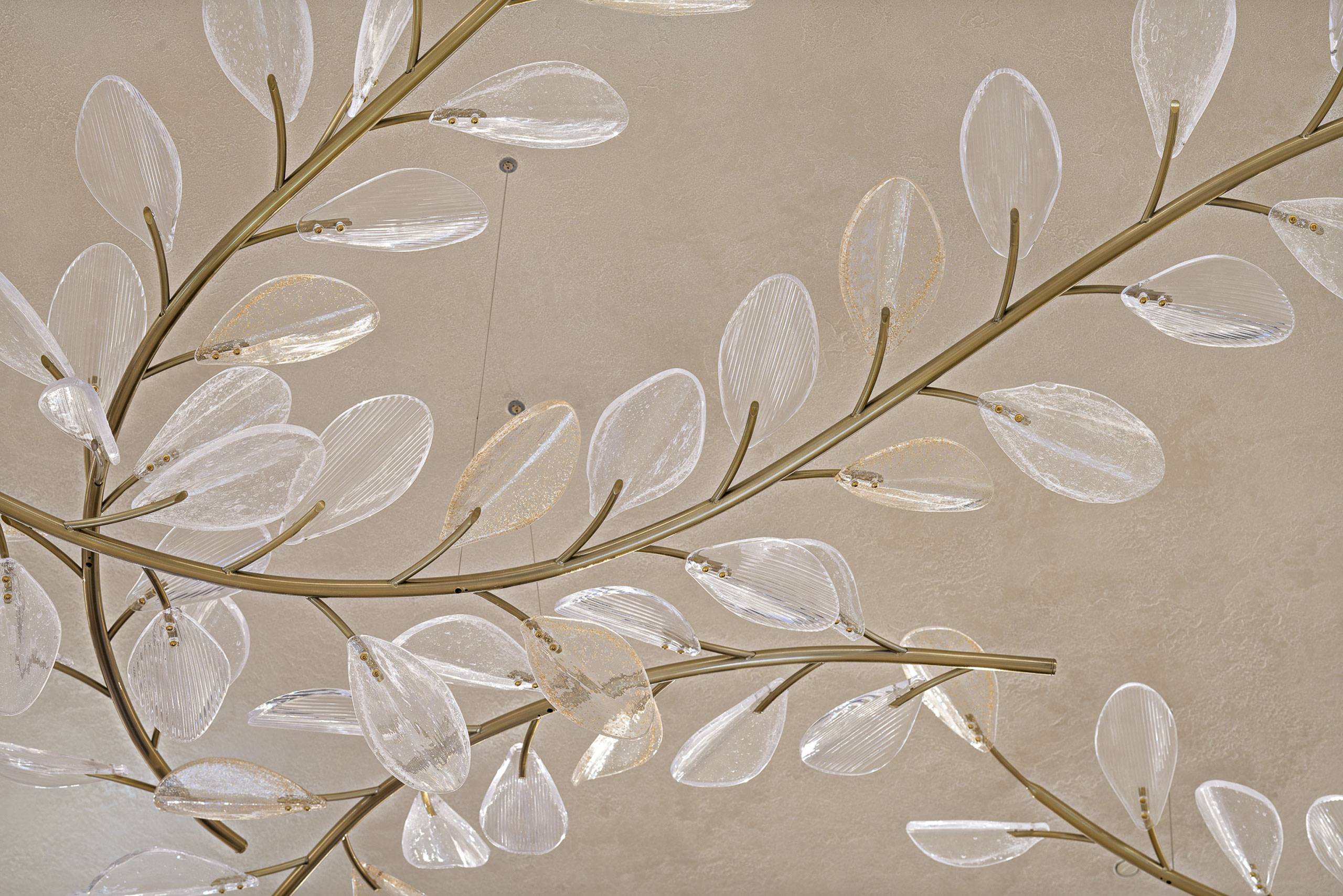How Strong Can Thin Ice Be
By: Martin Váša
Photo: Lasvit
The Swiss Alps boast a brand-new glacier cave the magic of which can be enjoyed even without trekking gear. You don’t even have to give up the comforts of the city. It is located in Geneva, right on Rue du Rhône, one of the most upmarket and therefore most expensive streets in the world. For more than half a century, it has been a place where shoppers can find one of the largest Cartier boutiques in Europe.
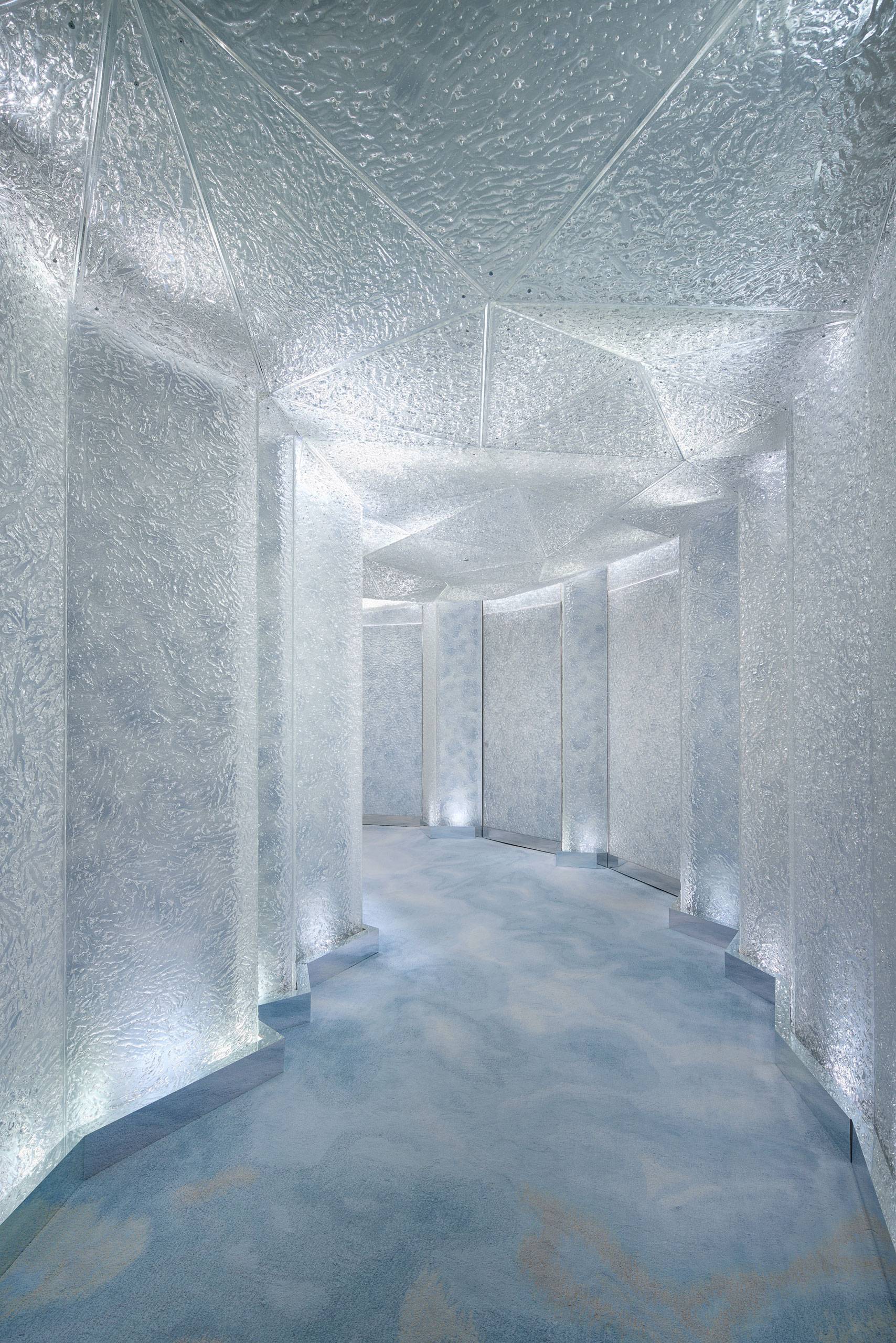
As with any adventure, a treasure trove of collectible jewellery, watches and other rare pieces awaits visitors to the Cartier boutique at the end of the glacier cave.
As a manufacturer of the finest jewellery, the house of Cartier is an unquestionable synonym for dazzling glamour. Always brought into being by means of extraordinary finesse, the beauty of its pieces embodies boundless imagination, freedom, curiosity, sophistication and timelessness. These are the values that firmly establishedthe brand’s worldwide reputation. Inviting a team of the esteemed North Bohemian glassworks led by respected designer Wanda Valihrachová to collaborate on the glacier cave therefore does not come as much of a surprise.
Inspired by the shimmering ice found in real alpine caves, Wanda designed a crystalline passageway. It harmonises perfectly both with the jewellery displayed in the boutique and with the nature surrounding Geneva. The surprisingly simple, straight components impart a somewhat futuristic appearance to the installation. In the designer’s opinion, the form needs to be simplified so as not to give the impression of being too literal and, at the same time, it needs to function as a subtle complement to the rest of the interior.
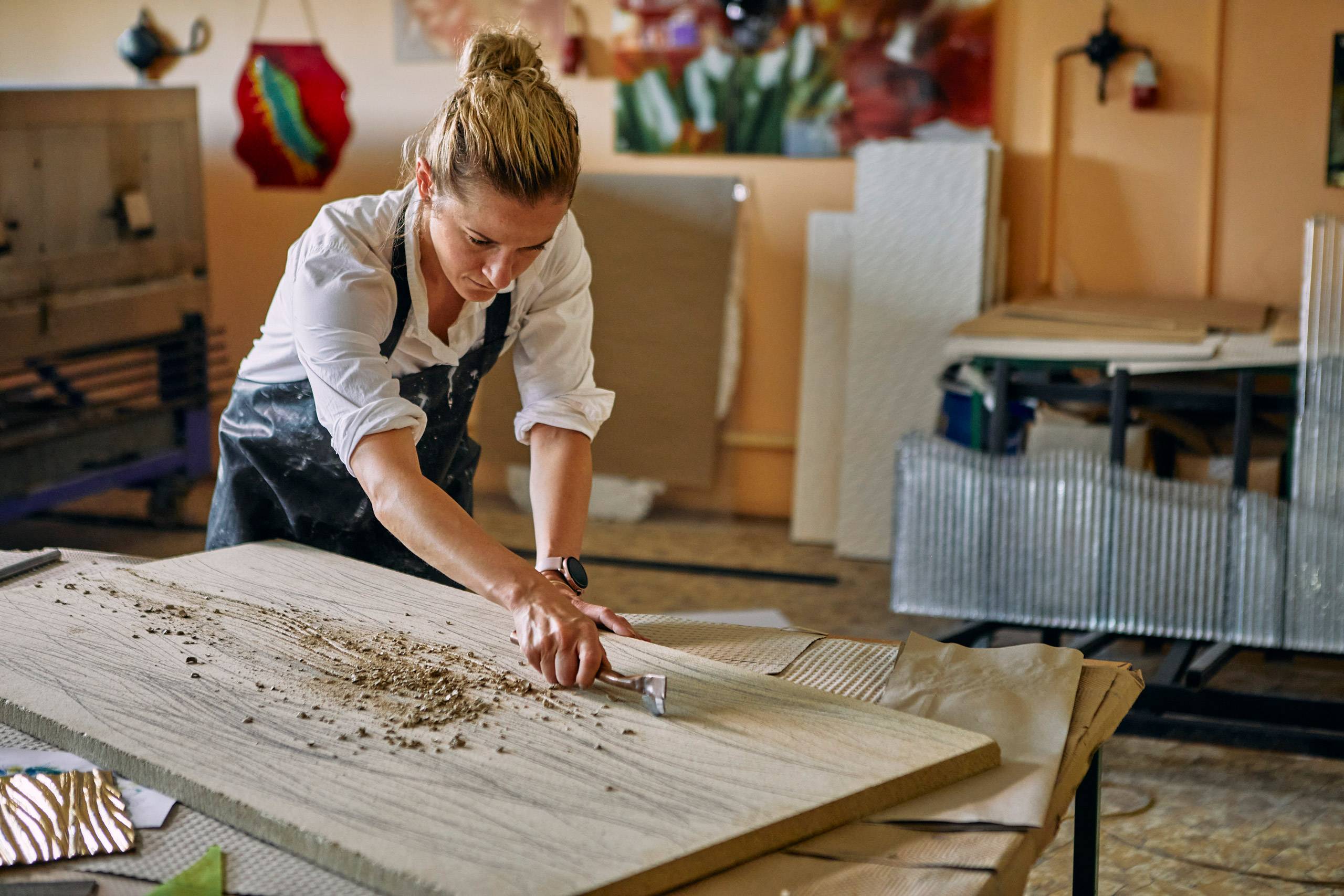
It is often said that without light there is no life. And this is why the designer decided to create a corridor that truly comes to life once it is illuminated. The impact of light on the interior is truly remarkable, resembling the effect of sunrays penetrating thin ice. “When I work, light is really my number one priority. Sorry, number two. Right after glass,” Wanda corrects herself with a smile, reflecting on the work. “I admit that sometimes the final artwork exceeds all my expectations, and this is exactly a case.”

The individual components are unique and accurately imitate the surface of real ice. Their surface, however, was intended to be flat, in order to give the installation a more modern appearance.
“Light and glass need each other, without light the crystal installations would lose their beauty”
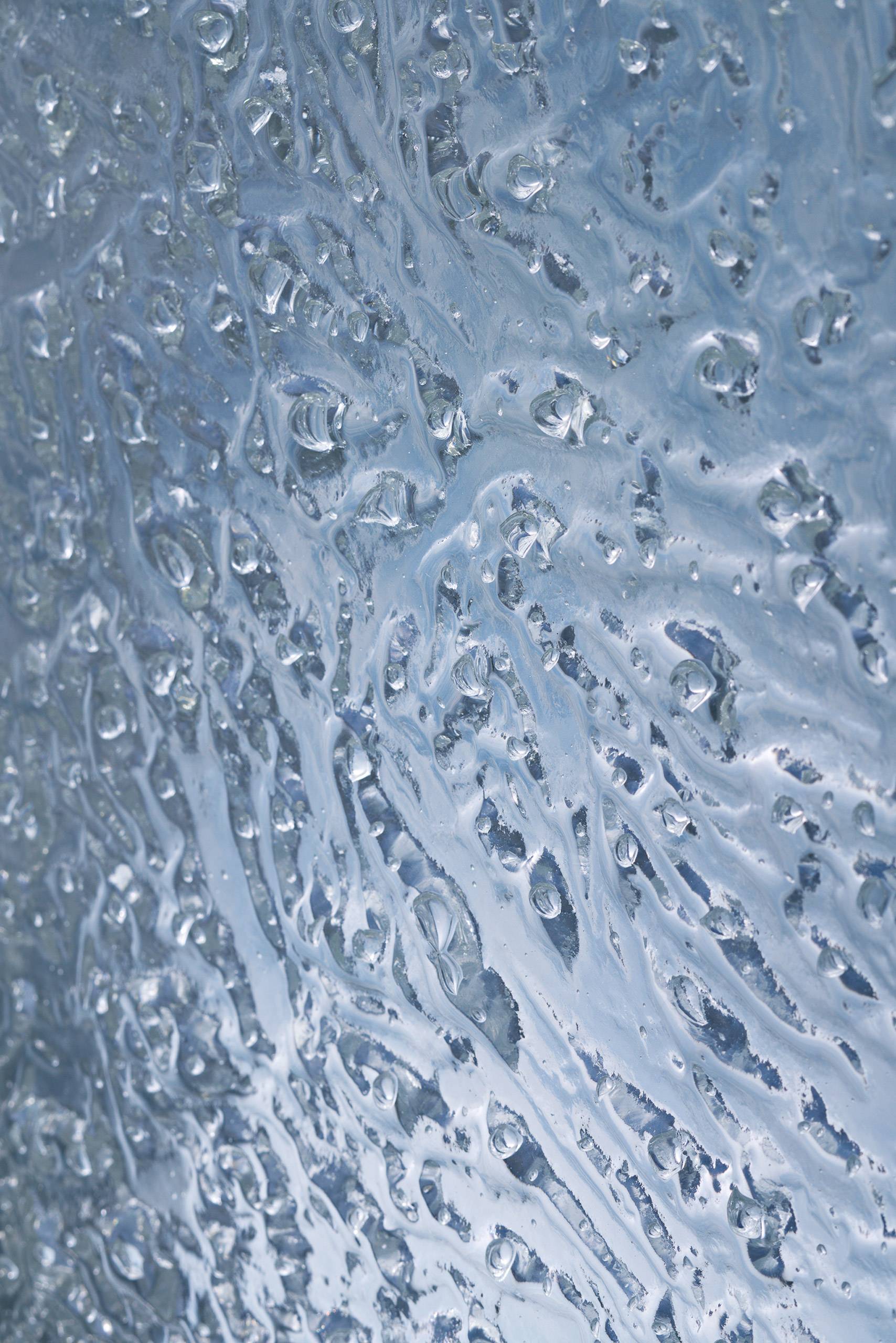
Bubbles are created by tiny crystals of glass being melted between two panes of glass. “With the float glass technology, we again worked with crumpled papers. These are squeezed by hand – it’s not machine production and it makes the installation look alive,” explains Wanda.
“If you give glass shape, texture and the imprint of a creator, it repays you with sparkle, but only in combination with light.”
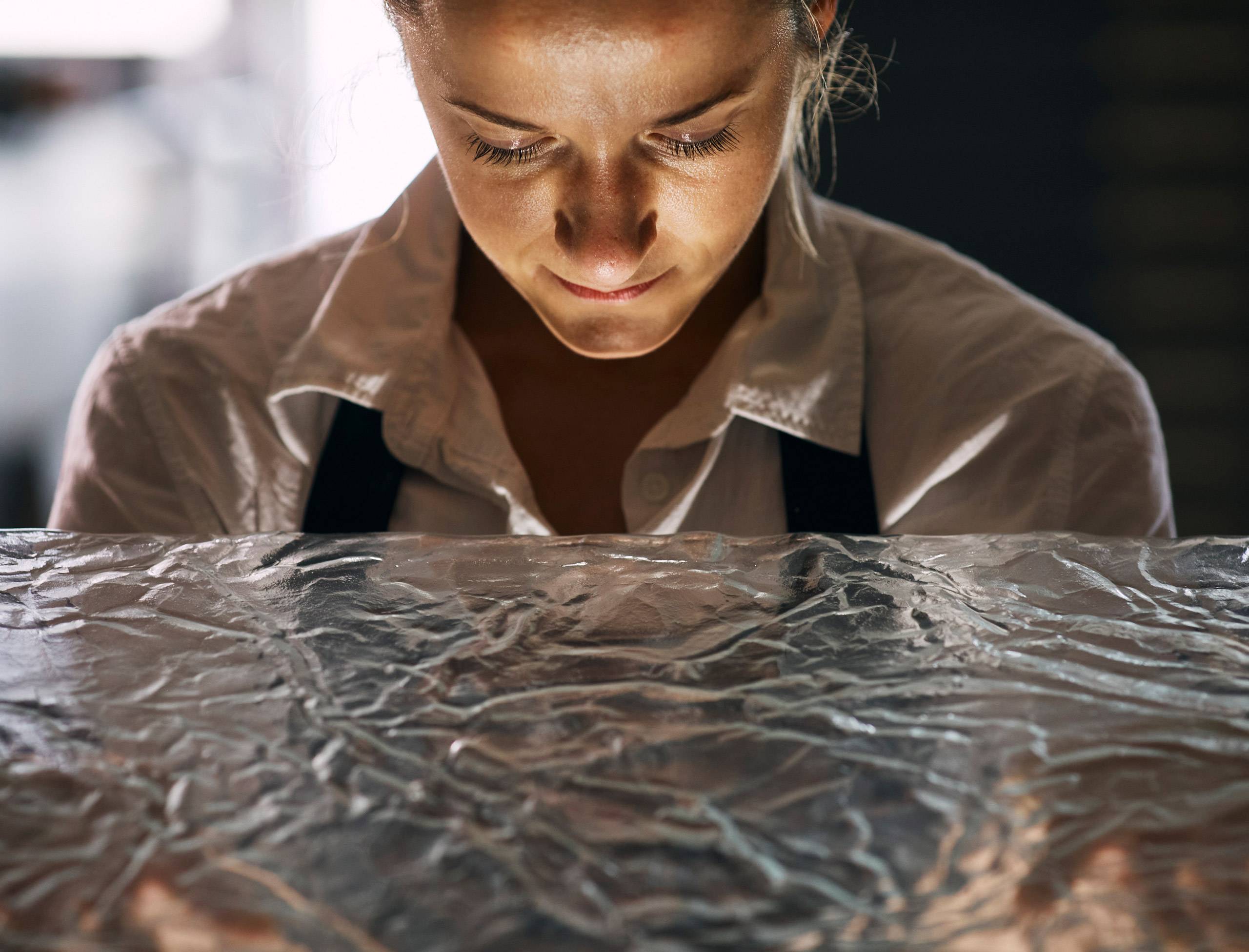
As is the case with a finely cut diamond, the beauty of crystal glass evoking a glacier cave is worthy of our attention. With its chilling elegance that is almost unsettling, the corridor has an effect on the visitors even before they enter it, and it is only the close-up view that allows them to appreciate it fully. The glass is permeated by bubbles produced during the process of melting and their shape cannot be predicted in advance. It is this very randomness that ensures the outcome is full of life, and as perfectly imperfect as nature itself.
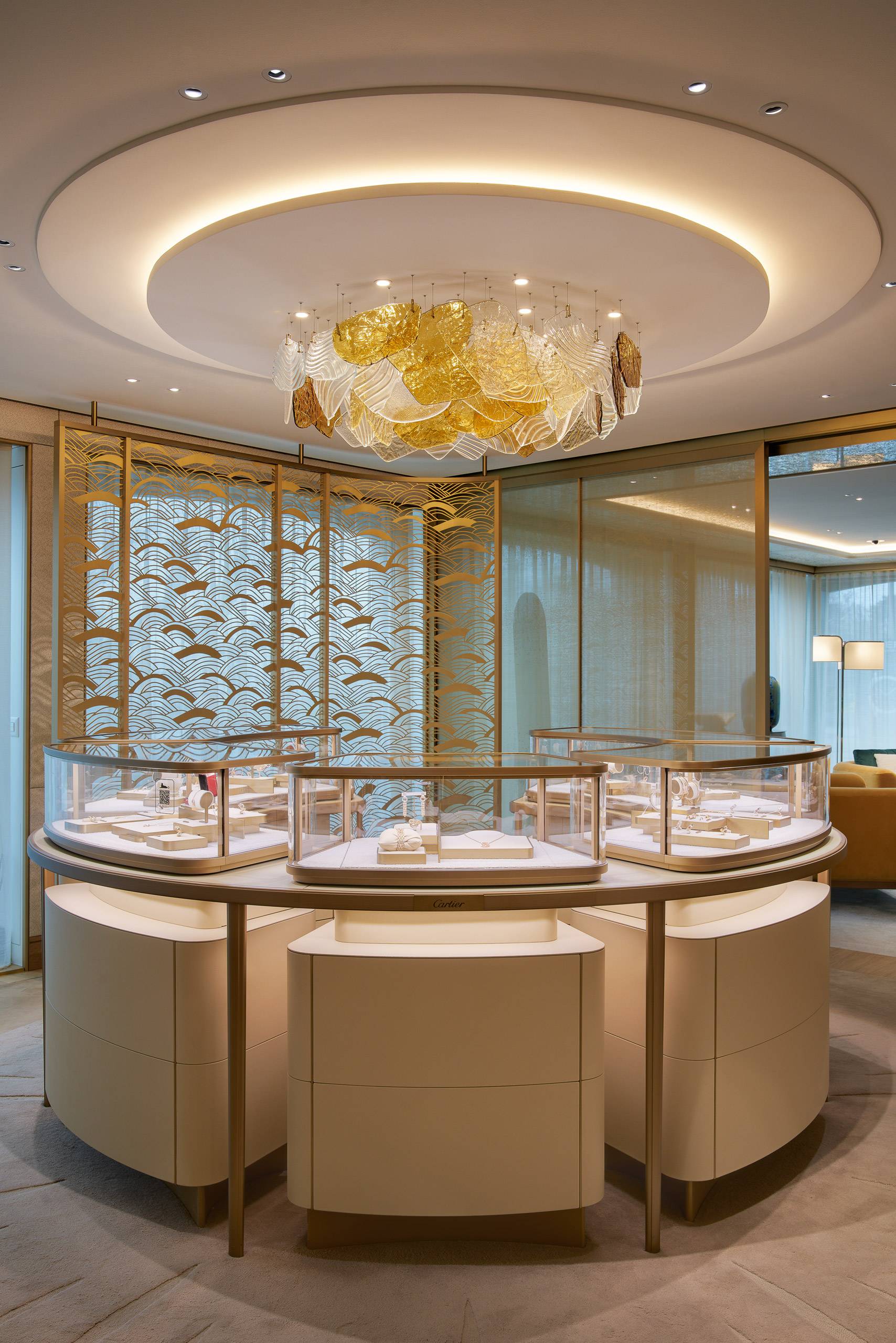
The jewellery display in the boutique is guarded by Wanda’s installation entitled Flow. With its organic soft shapes, alternating textures and shades, it celebrates the nature of the Swiss Alps.
The key ingredient, without which even the finest pieces of a jewellery house could not do without, is light. The corridor leading to the department offering traditional goods, such as collectible jewellery, watches and rare antique objects from the Cartier workshops, seems to be there to remind you that the journey, in this case, is also the destination. Visitors suddenly find themselves beneath the peaks of the Swiss Alps, and their shopping experience becomes an unforgettable adventure, unmatched by anything else.
Not even by the visit of the other two hundred Cartier boutiques that grace the world. How was it possible to conjure up a corridor that so accurately imitates the unmistakable signature style of nature? “I knew immediately that it would be a polygonal installation made up of a large number of components, each of them truly original,” says Wanda. “I approached the piece as a sculpture that is an integral part of the interior.”
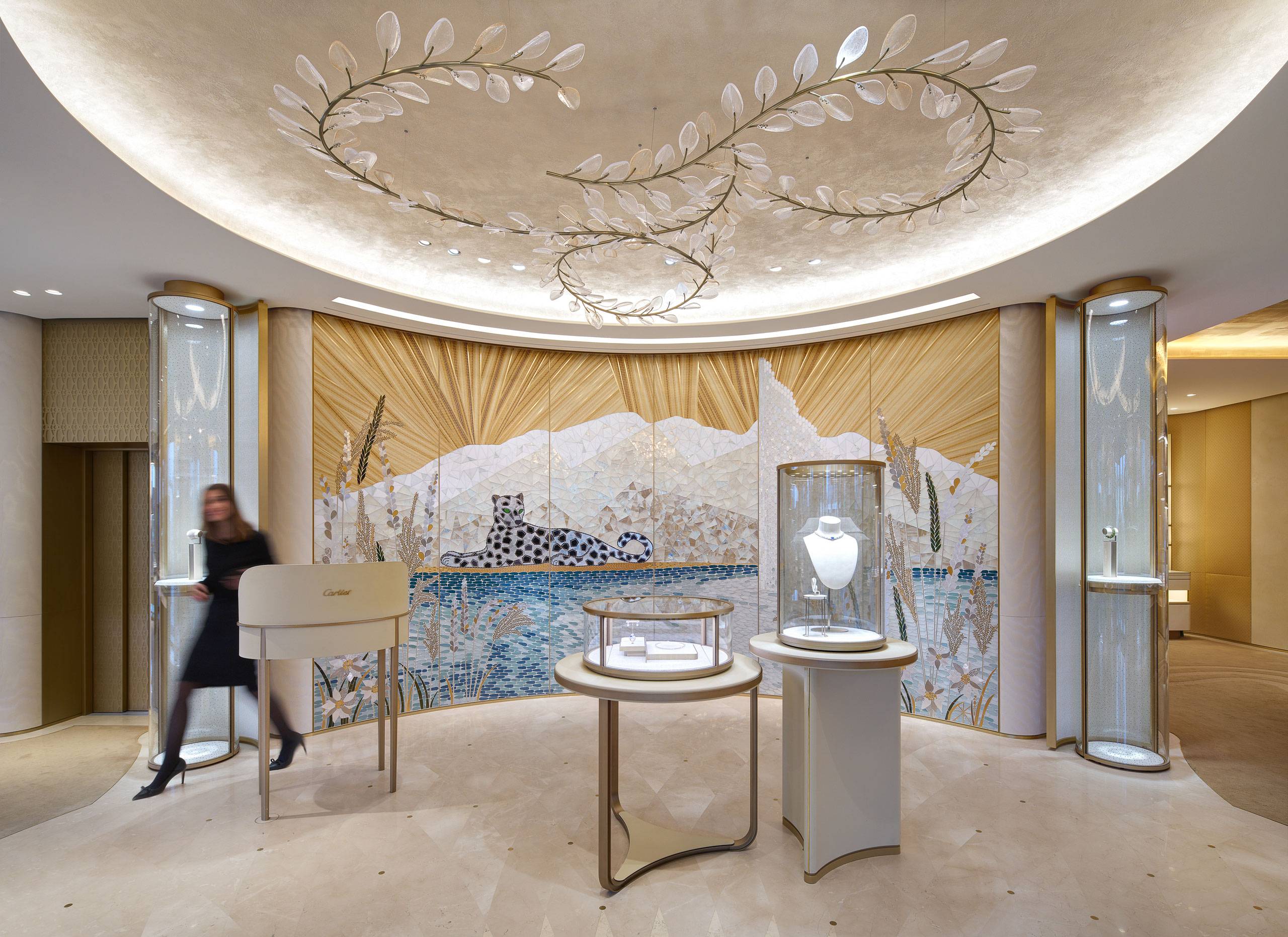
An impressive fifty-five square metres of richly textured glass weighing two tonnes covers the walls, ceiling and doors of the interior. Four extraordinary light sculptures accompany the visitors on their journey, as well as paying homage to the unique spirit of local nature. They also communicate a crucial message: that this is a place where innovation is celebrated. More than that, however, they serve one important purpose – they prove that if you are able to dream, sometimes even the wildest fantasies can come true.
